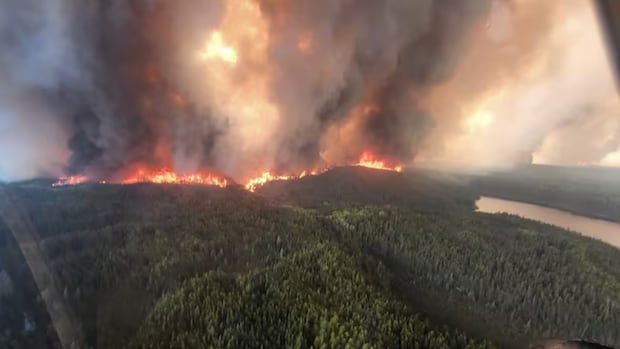|
Canadian wildfire smoke blows over to EuropeNotice: Undefined variable: newid in D:\vertrigo\www\voice\see.php on line 32   The first plume hit the Mediterranean region on May 18, and a larger one reached northwestern Europe on June 1, with more expected to hit Europe this week, Europe's Copernicus Atmosphere Monitoring Service (CAMS) reported Tuesday. Large, out-of-control fires continue to rage from B.C. to Ontario, forcing more than 17,000 people to flee their homes in Manitoba, and thousands more in other provinces, including Alberta and Saskatchewan. Mark Parrington, a senior scientist with CAMS, said the long-distance movement of smoke plumes was a "reflection of the scale of the fires and impacts they have been having in Manitoba and Saskatchewan." While the smoke is expected to lead to hazy skies and red-orange sunsets in Europe, it's not expected to have a significant impact on surface air quality there, as the smoke is high above the ground. Besides heading east to Europe, smoke from the wildfires is also blowing southeast to other parts of Canada and into the upper Midwest in the U.S., causing "hazardous" air quality in some areas. This year's wildfires have already burned 2.1 million hectares, according to the Canadian Wildland Fire Information System. Fire danger is extreme across much of the regions where wildfires are raging, thanks to hot, dry and windy conditions — the kinds of weather conditions that are more likely and intense due to human-caused climate change. WATCH | The fire weather pattern everyone is watching: The fires themselves are also producing huge amounts of climate-warming emissions: CAMS estimated that so far this year, Canadian wildfires had released 56 megatonnes of carbon by June 2. That's second highest for this time of year, just behind 2023, a record-breaking year for wildfires. Source link Posted: 2025-06-03 21:04:38 |
'No-fuss shepherd's pie' makes mash taste better with extra step
|
|
Usyk vs Dubois 2 LIVE: Updates from £150m rematch as history beckons for Brit | Boxing | Sport
|
|
Michael Rider evolves a winning formula in debut for Celine in Paris | Fashion
|
|
'I visited a town that's a billionaires haven with a one-of-a-kind airport' | World | News
|
|
England v India: third women’s T20 cricket international – live | Women's cricket
|
|
'Most intense war film ever made' streaming now on Amazon Prime | Films | Entertainment
|
|
Reform UK to pilot Doge-style scheme to examine council spending | Reform UK
|
|
Trump announces tariff rates for numerous countries
|
|







